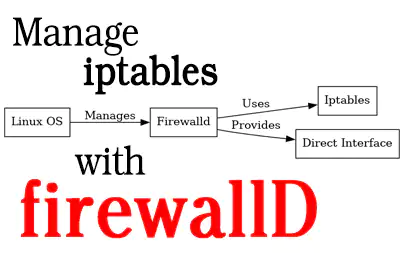In the vast realm of Linux, where the dragons of iptables once roamed freely, a new guardian emerged from the shadows: “firewalld.” Indeed, as we traverse the annals of Linux history, it becomes evident how firewalld emerged as a beacon, illuminating the path for those seeking a modern approach to firewall management..
Introduction
Indeed, with the rise of Firewalld, the Linux landscape witnessed a transformative shift. Subsequently, this dynamic firewall management tool paved the way for a groundbreaking and streamlined approach to network packet filtering. But why, you ask? Let’s delve deeper.
History and Development
In the not-so-distant past, iptables reigned supreme. However, as the digital landscape evolved, so did the need for a more dynamic and user-friendly firewall solution. Enter firewalld, developed by the wizards at Red Hat. Its inception aimed to provide a more intuitive interface for managing firewalls, especially for those not well-versed in the arcane arts of iptables.
Why Firewalld Over Iptables?
Ah, the age-old debate! While iptables is powerful, it’s akin to wielding a double-edged sword. Firewalld, on the other hand, offers a more streamlined approach. Here are some compelling reasons to choose it:
- Simplicity: Commands are more intuitive, making it easier for mere mortals to grasp.
- Dynamic Updates: No need to restart the firewall every time you make a change. Firewalld updates rules on-the-fly.
- Zones: A brilliant concept, which we’ll explore shortly, that allows for more granular control over network traffic.
Functionality and Commands
Firewalld boasts a plethora of commands, each more enchanting than the last. For instance, the firewall-cmd command is your trusty steed, guiding you through the vast landscapes of firewalld.
Example: To list all active zones, simply use:
firewall-cmd --get-active-zonesThis command returns a list of all zones currently in use, providing a clear snapshot of your firewall’s configuration.
Zones: What and Why?
Within the intricate tapestry of firewalld, zones emerge as distinct territories. Consequently, they set varying trust levels for network connections, much like diverse districts in a city, each adhering to its unique set of rules.
- Public Zone: The bustling market square where everyone gathers. It’s less secure and more open.
- Home Zone: Your personal abode, where only trusted individuals are allowed.
Why Zones? Zones allow for flexibility. Instead of crafting intricate rules for each connection, simply assign it to a zone, and voilà! The rules for that zone apply.
Advantages Over Iptables
While iptables is like an old tome filled with complex spells, firewalld is the modern spellbook with easy-to-understand incantations. Some advantages include:
- User-Friendly: No need to be a sorcerer to understand it.
- Dynamic: Changes are immediate, without the need for constant restarts.
- Better Organization: With zones, managing rules becomes a breeze.
In the grand tapestry of Linux, firewalld undeniably stands out, illuminating the path for many. As we reflect on its inception, it’s evident that it shines brightly as a beacon of hope for those weary of iptables’ intricacies. Moreover, it offers a dynamic, user-friendly approach to firewall management, ensuring that our digital realms remain impervious to threats. Furthermore, with its innovative features and intuitive design, it has revolutionized the way we perceive and manage network security. Therefore, as you navigate the intricate world of Linux, and especially when you find yourself at the crossroads of firewall management, let the legacy of firewalld serve as a reminder. Indeed, its tales of innovation and security are bound to inspire and guide you to safer digital shores.
Outbound Links:
- Firewalld Official Website: This is the official website for Firewalld and provides comprehensive information on its features, benefits, and how to use it.
- Red Hat Firewalld Documentation: This documentation from Red Hat is an authoritative guide on Firewalld, especially useful for those using RHEL. It covers everything from basic to advanced configurations.
- Firewalld Cheat Sheet: If you’re keen on mastering firewalld, I highly recommend checking out the “Firewalld Cheat Sheet” on Linux Professional. It’s a comprehensive guide that covers everything from basic to advanced commands, offering invaluable insights for both beginners and seasoned professionals.
Ah, dear reader, as our journey comes to an end, remember: in the world of Linux, there’s always a new adventure waiting around the corner. Until next time, fare thee well!
